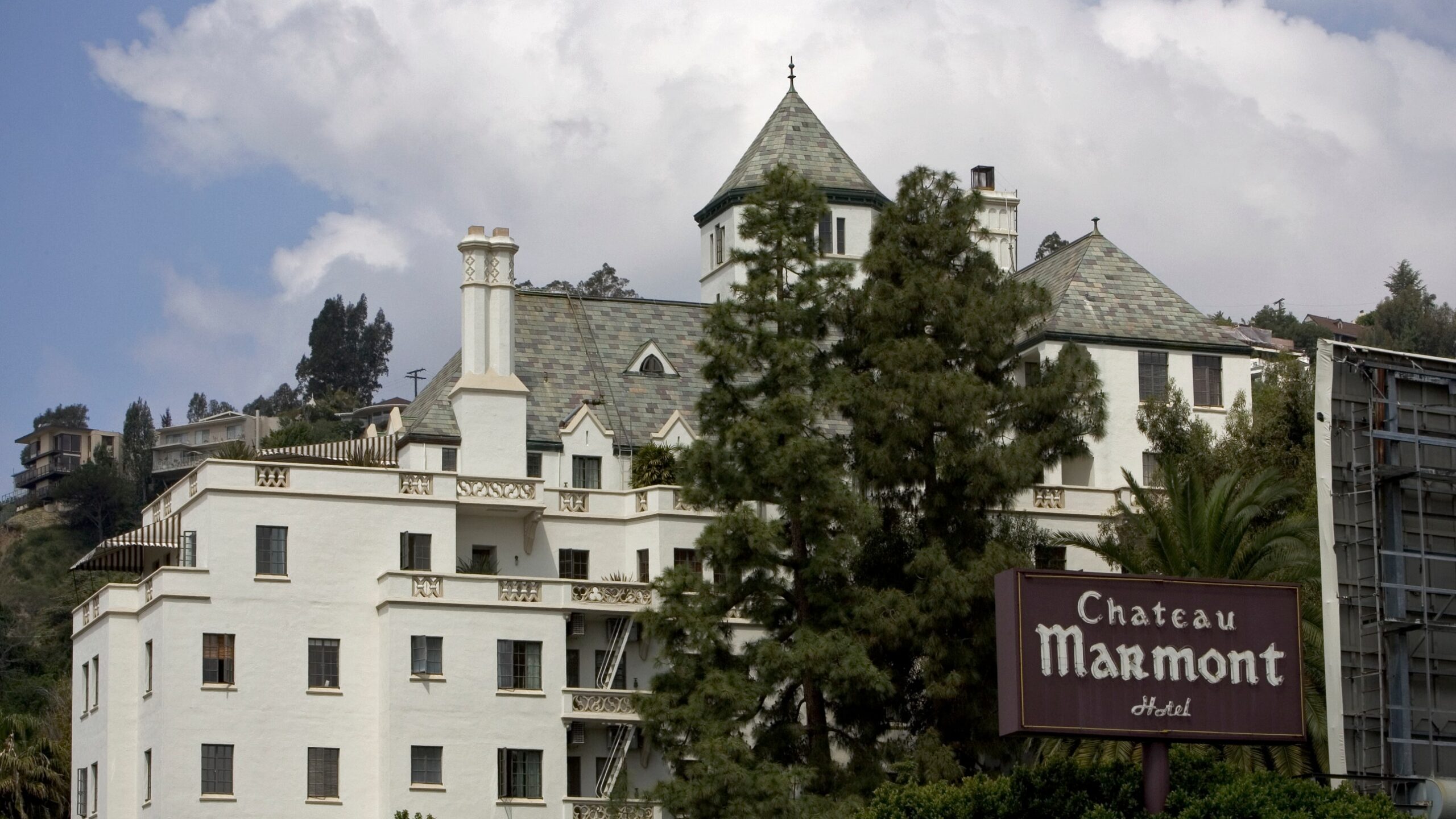Since it opened in 1929, the Chateau Marmont has been a beloved retreat of actors, writers, musicians, and directors craving a temporary (or sometimes not-so-temporary) home away from the prying eyes of the public and the press. As the Old Hollywood adage goes: “If you want to be seen, go to the Beverly Hills Hotel. If you don’t want to be seen, go to Chateau Marmont.”
The Chateau was the brainchild of Los Angeles attorney Fred Horowitz, who hired architects Arnold A. Weitzman and William Douglas Lee to build an apartment building inspired by European châteaux, particularly Château d’Amboise in the Loire Valley, France. Horowitz chose 8221 Sunset Boulevard, a hillside site on the northwest side of Sunset Boulevard and Marmont Lane in West Hollywood, for his complex, which was constructed of an earthquake-proof combination of concrete and reinforced steel. The French-influenced, L-shaped building was topped with a turret and a steeply-pitched slate roof and set above a garage with valet parking. Inside, the architects arranged 43 apartments with a variety of floor plans and Gothic details. Chateau Marmont opened on February 1, 1929, offering furnished apartments with one to six rooms. The most spacious penthouse went for $750 per month (about $13,453 today).
After Horowitz and his investors were hit by the Great Depression, Chateau Marmont was sold in 1931 for $750,000 to Albert E. Smith, founder of the motion picture company Vitagraph. Smith converted the property into a hotel, taking advantage of the swell of visitors making their way to Los Angeles for the 1932 Summer Olympics. Smith hired silent film actress Ann Little to manage the property and she helped develop the Chateau’s signature aesthetic. Little redecorated the Chateau with an eclectic mix of pieces from the estates of Southern Californians trying to make up for their losses following the Great Depression and added amenities including basic room service.
By the mid-1930s, the Sunset Strip became a hotspot, with the Sunset Tower, The Trocadero, and Schwab’s Pharmacy opening near the Chateau and adding to the area’s allure. In 1937, Smith purchased a plot of land east of the Chateau with several existing two-story rental homes and transformed them into the first of the now famous bungalows, which offered Hollywood stars even more privacy in the already-cloistered hotel.
Smith sold the hotel in 1942 for $350,000 to German banker Erwin Brettauer. While the new owner eliminated many of the amenities and traditions incorporated by Little, he also invested in the property, including hiring costume designer Don Loper to refurbish the penthouse. Brettauer added a small outdoor pool in the summer of 1947, and it quickly became the gathering hub of the hotel. In 1951 he purchased a plot of land at the northwest corner of the site and hired modernist architect Craig Ellwood, known for his Case Study Houses, to build two additional contemporary bungalows, which opened in 1952.
Brettauer sold Chateau Marmont in 1963, and the property would pass through several owners throughout the 1960s and early 1970s. During that time, the hotel fell into a state of disrepair. In 1975, it was purchased for $1 million by Sarlot-Kantarjian, a real estate development and construction firm owned by Raymond Sarlot and Karl Kantarjian.









